Golf Digest has published America’s 100 Greatest Golf Courses since 1966, making it the oldest and most respected ranking in golf. We are proud to say our most recent edition, published in May 2023, is the most scientific ever—with our 1,800-plus panelists submitting more than 85,000 evaluations over our 10-year scoring criteria. Our evaluators play and score candidate courses on six criteria, each on a scale of 1 to 10: Shot Options, Challenge, Layout Variety, Aesthetics, Conditioning and Character.
After panelists submitted their evaluations, Golf Digest calculated the average score of each categories (scores in the Shot Values and Layout Variety categories count double), removed any extreme outliers, then arrived at an overall score for each course to determine the overall rankings. The result is a new set of rankings we’re proud of—and we’re sure you’ll enjoy digging deeper.
We urge you to click through to each individual course page for bonus photography, drone footage and reviews from our course panelists. Plus, you can now leave your own ratings on the courses you’ve played … to make your case why your favorite should be ranked higher.
(Parentheses indicate the course’s previous ranking.)
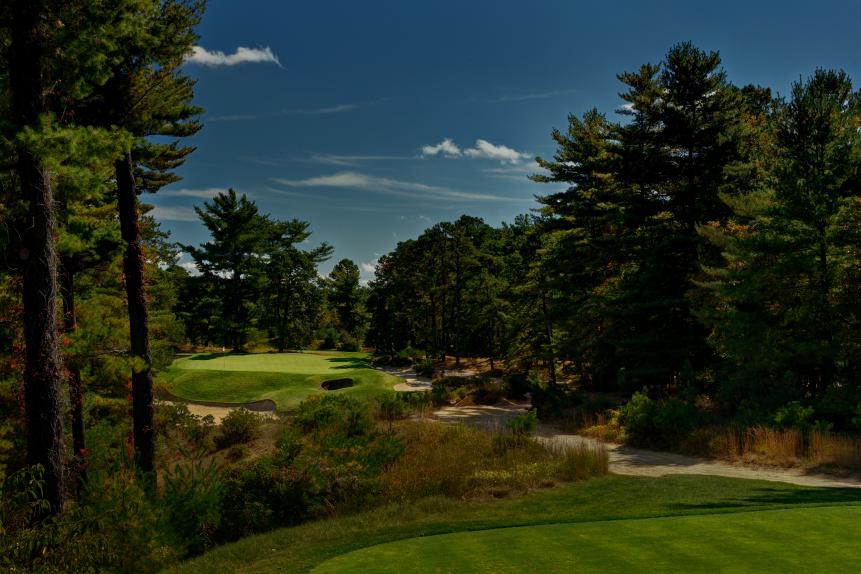 Dom Furore Private 1. (1) Pine Valley Golf Club Pine Valley, NJ 4.7 19 Panelists
Dom Furore Private 1. (1) Pine Valley Golf Club Pine Valley, NJ 4.7 19 Panelists
- Best In State
- 100 Greatest
A genuine original, its unique character is forged from the sandy pine barrens of southwest Jersey. Founder George Crump had help from now-legendary architects H.S. Colt, A.W. Tillinghast, George C. Thomas Jr. and Walter Travis. Hugh Wilson (of Merion fame) and his brother Alan finished the job, and William Flynn and Perry Maxwell made revisions. Throughout the course, Pine Valley blends all three schools of golf design—penal, heroic and strategic—often times on a single hole. Recent tree removal at selected spots have revealed some gorgeous views of the sandy landscape upon which the course is routed, and Tom Fazio has put his own touch on the design with bunker remodels that have given the barrens a more intricate and ornate look. Explore our full review 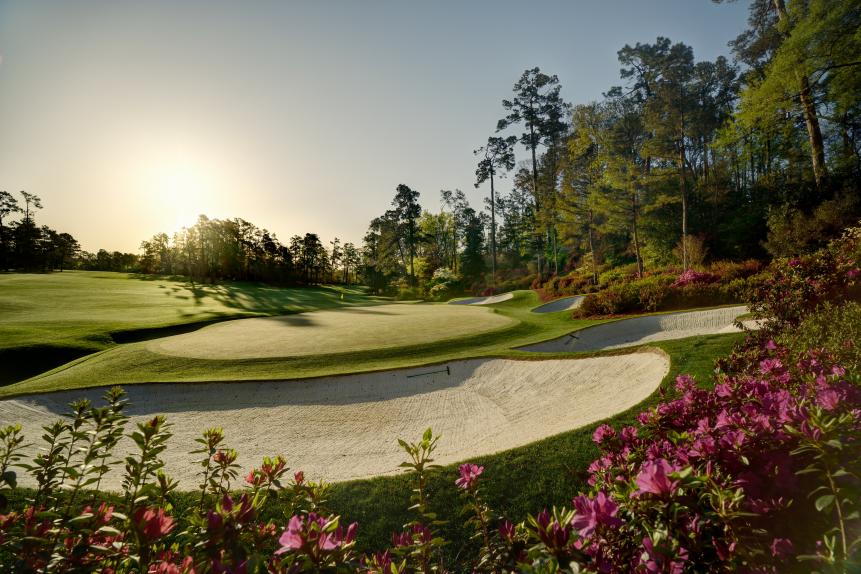 Dom Furore Private 2. (2) Augusta National Golf Club Augusta, GA 5 12 Panelists
Dom Furore Private 2. (2) Augusta National Golf Club Augusta, GA 5 12 Panelists
- 100 Greatest
- Best In State
No club has tinkered with its golf course as often or as effectively over the decades as has Augusta National Golf Club, mainly to keep it competitive for the annual Masters Tournament, an event it has conducted since 1934, with time off during WWII. All that tinkering has resulted in an amalgamation of design ideas, with a routing by Alister Mackenzie and Bobby Jones, some Perry Maxwell greens, some Trent Jones water hazards, some Jack Nicklaus mounds and swales and, most recently, extensive rebunkering and tree planting by Tom Fazio. The tinkering continues, including the lengthening of the par-4 fifth in the summer of 2018, the lengthening of the 11th and 15th holes in 2022, and the addition of 35 yards to the famed par-5 13th in 2023. Explore our full review
From Golf Digest Architecture Editor emeritus Ron Whitten:
Cypress Point, the sublime Monterey Peninsula work of sandbox sculpture, whittled Cypress and chiseled coastline, has become Exhibit A in the argument that classic architecture has been rendered ineffectual by modern technology.
I’m not buying that argument. Those who think teeny old Cypress Point is defenseless miss the point of Alister MacKenzie’s marvelous design.
MacKenzie relished the idea that Cypress Point would offer all sorts of ways to play every hole. That philosophy still thrives, particularly in the past decade, after the faithful restoration of MacKenzie’s original bunkers by veteran course superintendent Jeff Markow. Explore our complete review here—including bonus photography and ratings from our expert panelists.
Explore our full review 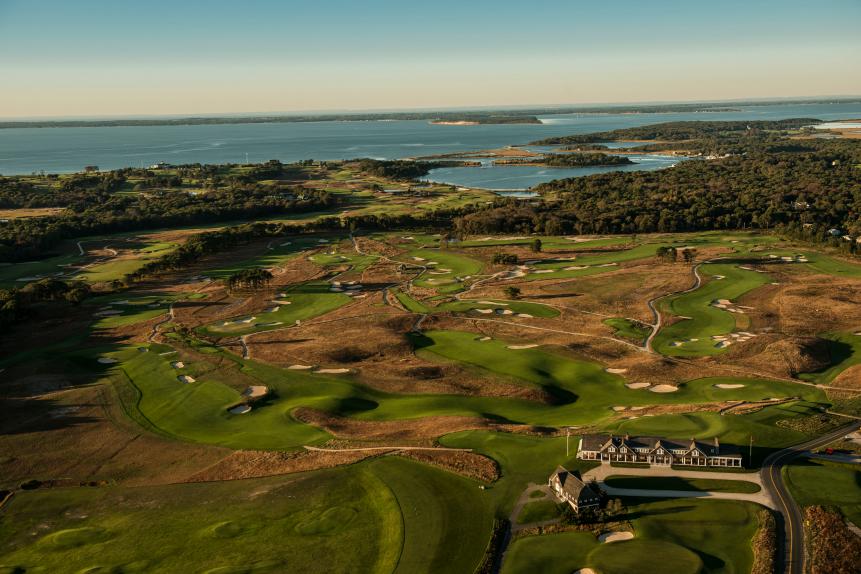 Dom Furore Private 4. (4) Shinnecock Hills Golf Club Southampton, NY 5 10 Panelists
Dom Furore Private 4. (4) Shinnecock Hills Golf Club Southampton, NY 5 10 Panelists
- Best In State
- 100 Greatest
Generally considered to be the earliest links in America, heavily remodeled by C.B. Macdonald, then replaced (except for three holes) by William S. Flynn in the early 1930s, it’s so sublime that its architecture hasn’t really been altered for nearly 60 years. Stands of trees that once framed many holes have been removed, and in 2012, the team of Bill Coore and Ben Crenshaw did make a few changes, mostly greens and fairways expansions and new mowing patterns, though those were modified in preparation for the 2018 U.S. Open, won by Brooks Koepka. Shinnecock will again host the U.S. Open in 2026. Explore our full review Private 5. (5) Oakmont Country Club Oakmont, PA 4.9 23 Panelists
- 100 Greatest
- Best In State
Once tens of thousands of trees were removed between the early 1990s and 2015 (most planted in the 1960s), Oakmont’s original penal design was re-established, with the game’s nastiest, most notorious bunkers (founder-architect H.C. Fownes staked out bunkers whenever and where ever he saw a player hit an offline shot), deep drainage ditches and ankle-deep rough. Oakmont also has the game’s swiftest putting surfaces, which were showcased during the U.S. Open in 2016, despite early rains that slowed them down a bit. Gil Hanse and Jim Wagner made bunker modifications and expanded the greens throughout the course in 2023 in preparation for the 2025 U.S. Open. The USGA has already awarded Oakmont three additional Opens between 2033 and 2049, reinforcing its title as the Host of the Most U.S. Opens, ever. Explore our full review 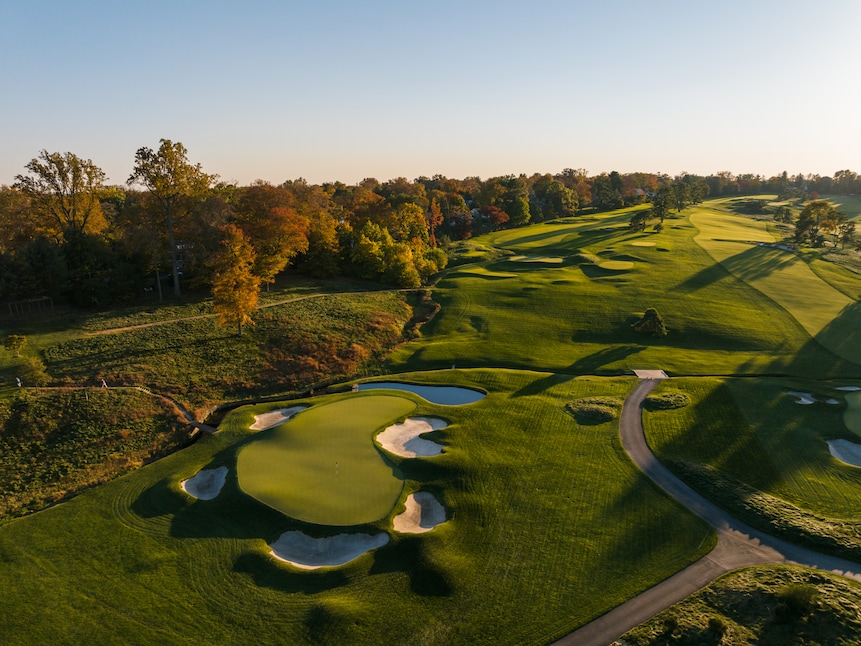 Matt Hahn Private 6. (6) Merion Golf Club: East Ardmore, PA 4.9 27 Panelists
Matt Hahn Private 6. (6) Merion Golf Club: East Ardmore, PA 4.9 27 Panelists
- Best In State
- 100 Greatest
Merion East has long been considered the best course on the tightest acreage in America, and when it hosted the U.S. Open in 2013, its first since 1981, the present generation of big hitters couldn’t conquer this clever little course. They couldn’t consistently hit its twisting fairways, which are edged by creeks, hodge-podge rough and OB stakes and couldn’t consistently hold its canted greens, edged by bunkers that stare back. Justin Rose won with a 72-hole total of one-over-par, two ahead of Jason Day and Phil Mickelson. With Gil Hanse’s extensive two-year renovation after that tournament making even more improvements at Merion’s East Course, the design should be even more polished and pristine when the U.S. Amateur returns in 2026 and the U.S. Open returns again in 2030. Explore our full review 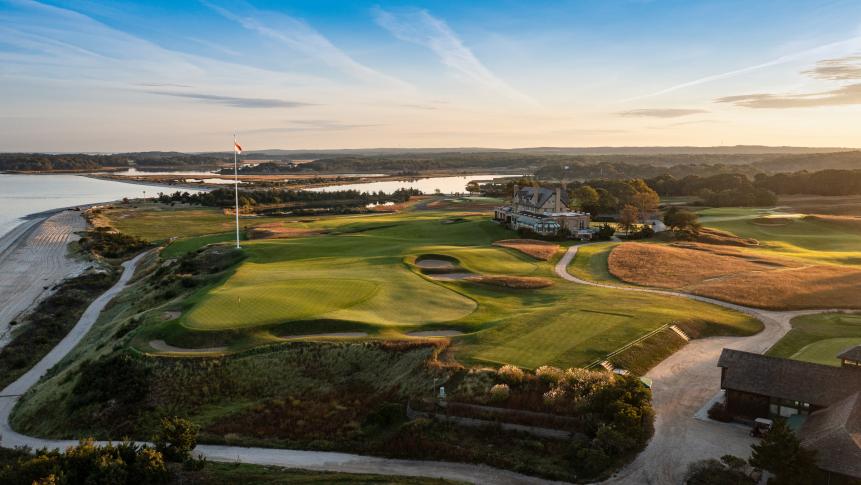 Carlos Amoedo Private 7. (7) National Golf Links of America Southampton, NY 4.9 21 Panelists
Carlos Amoedo Private 7. (7) National Golf Links of America Southampton, NY 4.9 21 Panelists
- Best In State
- 100 Greatest
This is where golf architect Seth Raynor got his start. A civil engineer by training, he surveyed holes for architect C.B. Macdonald, who scientifically designed National Golf Links as a fusion of his favorite features from grand old British golf holes. National Golf Links is a true links containing a marvelous collection of holes. As the 2013 Walker Cup reminded us, Macdonald’s versions are actually superior in strategy to the originals, which is why National’s design is still studied by golf architects today, its holes now replicated elsewhere. Hard to fathom that National Golf Links of America was not ranked among America’s 100 Greatest Golf Courses from 1969 until 1985. Theories involve possible hazy, rough around the edges conditions during the 1970s that dulled the architcture (something that didn’t impact over-the-fence Shinnecock Hills), the course’s relatively short length that didn’t meet the era’s “championship course” standards, or simply that the unique Macdonald shapes and concepts were too quirky for the prevailing tastes of the era. No matter now. National is rightly positioned as one of America’s most original and influential expressions of golf course architecture. Explore our full review 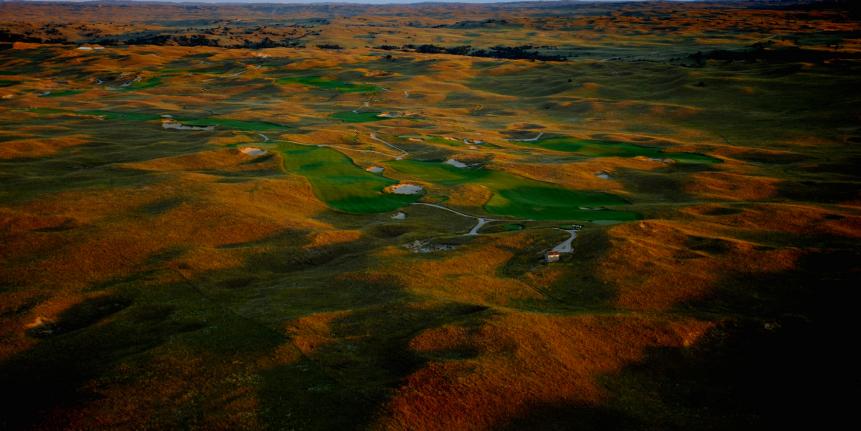 Dom Furore Private 8. (10) Sand Hills Golf Club Mullen, NE 5 15 Panelists
Dom Furore Private 8. (10) Sand Hills Golf Club Mullen, NE 5 15 Panelists
- 100 Greatest
- Best In State
The golf course wasn’t so much designed as discovered. Bill Coore and Ben Crenshaw trudged back and forth over a thousand acres of rolling sand hills in central Nebraska, flagging out naturally-occurring fairways and greens. By moving just 4,000 cubic yards of earth, and letting the winds shape the bunkers, the duo created what is undoubtedly the most natural golf course in America, a timeless course design. For decades, winter winds had always reshaped the bunkers, but course officials have recently discovered a method to prevent that. At the close of the season, they spray the surface of the sand in bunkers with a product that creates a crust to resist the howling winds. Explore our full review 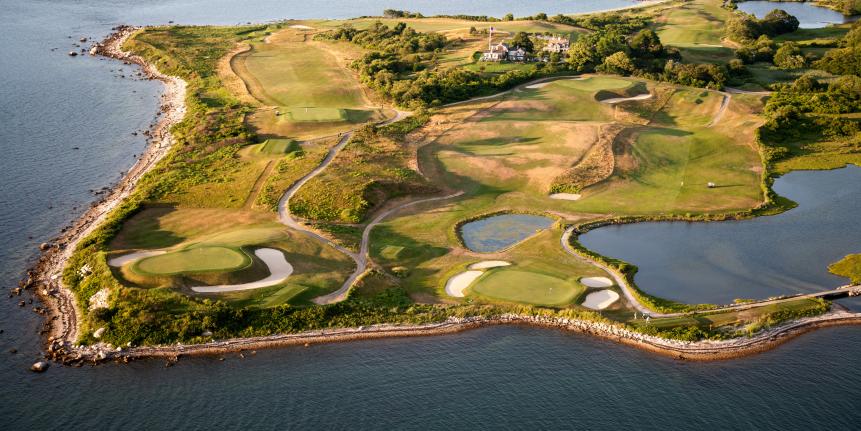 Stephen Szurlej Private 9. (9) Fishers Island Club Fishers Island, NY 4.8 23 Panelists
Stephen Szurlej Private 9. (9) Fishers Island Club Fishers Island, NY 4.8 23 Panelists
- Best In State
- 100 Greatest
Undoubtedly the most dazzling design of architect Seth Raynor, who died in early 1926, before the course had officially opened. His steeply banked bunkers and geometric greens harmonize perfectly with the linear panoramas of the Atlantic Ocean and Long Island Sound. The quality of the holes is also superb, with all Raynor’s usual suspects, including not one but two Redan greens, one on a par 4. The setting on a private island accessible only by ferry adds to the mystique, and three holes (four, five and nine) appear on our ranking of America’s 100 Greatest Holes. Explore our full review  Carlos Amoedo Private 10. (11) Seminole Golf Club Juno Beach, FL 4.8 22 Panelists
Carlos Amoedo Private 10. (11) Seminole Golf Club Juno Beach, FL 4.8 22 Panelists
- Best In State
- 100 Greatest
A majestic Donald Ross design with a clever routing on a rectangular site, each hole at Seminole encounters a new wind direction. The routing is perhaps the only thing that remains of Ross’ vision. The greens are no longer his, replaced 60 years ago in a regrassing effort that showed little appreciation for the original rolling contours. The bunkers aren’t Ross either. Dick Wilson replaced them in 1947, his own version meant to the imitate crests of waves on the adjacent Atlantic. A few years back, Bill Coore and Ben Crenshaw redesigned the bunkers again, set lower closer to the way Ross had them, along with exposing sandy expanses in the rough. The club is about to embark on another major remodel by Gil Hanse and Jim Wagner intended to finally recreate Ross’ internal green movements based on his blueprints and elevate sections of the course to remediate drainage concerns. Seminole has long been one of America’s most exclusive clubs, which is why it was thrilling to see it on TV for a first time during the TaylorMade Driving Relief match, and then again for the 2021 Walker Cup. Explore our full review
From Golf Digest Architecture Editor emeritus Ron Whitten: I’ve been told Gil Hanse had first examined the site of Ohoopee Match Club as far back as 2006 considered it ideal for golf: gently rolling terrain with no severe elevation changes, and beautiful sandy soil deposited by the nearby Ohoopee River, perfect for drainage and firm, fast conditions. The ground around tiny Cobbtown, Ga., is also perfect for growing onions—it’s just northeast of Vidalia, world-famous for the Vidalia onion. Indeed, Ohoopee’s logo is a freshly picked onion, although if you look closely, its roots are three writhing snakes. Any symbolism pertaining to match play is uncertain; perhaps it simply suggests the sort of putts one will face. What’s the composition of a course meant for match play? One might think it would contain lots of penal hazards, because a triple bogey on any particular hole would not be fatal in match play. Perhaps the targets would be smaller than normal, to level the playing field between big hitters and short-but-accurate golfers. That’s not the composition of the 7,325-yard championship course at Ohoopee. Hanse did produce dramatic visuals in this sandy locale that hark back to portions of Pinehurst and Pine Valley, from long expanses of sandy rough dotted with native plants to deep, foreboding pits of sand, but they’re mostly on the far perimeter of holes. Explore our complete review here—including bonus photography and ratings from our expert panelists.
Explore our full review 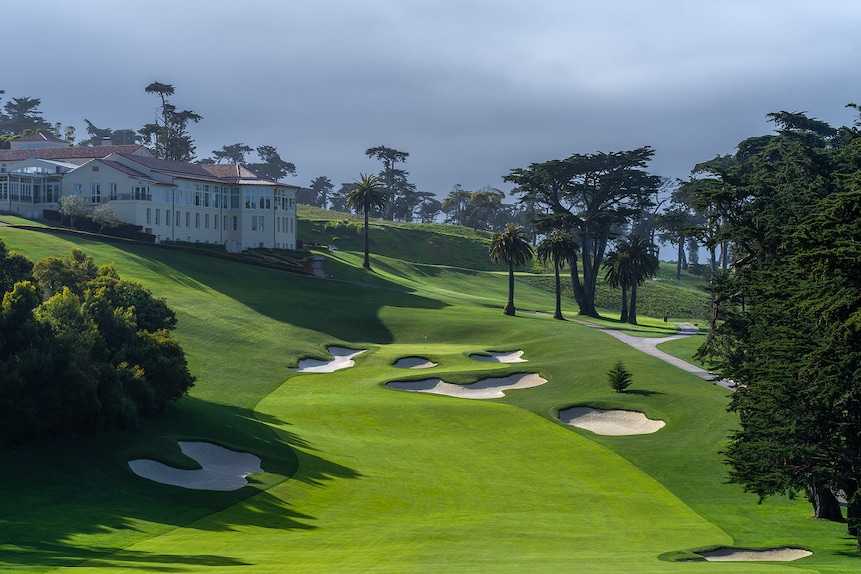 Evan Schiller Private 35. (34) The Olympic Club: Lake San Francisco, CA 4.8 26 Panelists
Evan Schiller Private 35. (34) The Olympic Club: Lake San Francisco, CA 4.8 26 Panelists
- Best In State
- 100 Greatest
It seems fitting that, in a town where every house is a cliffhanger, every U.S. Open played at Olympic has been one, too. For decades, the Lake was a severe test of golf. Once it was a heavily forested course with canted fairways hampered by just a single fairway bunker. By 2009, the forest had been considerably cleared away, leaving only the occasional bowlegged cypress with knobby knees, the seventh and 18th greens were redesigned and a new par-3 eighth added. Despite those changes, the 2012 U.S. Open stuck to the usual script: a ball got stuck in a tree, slow-play warnings were given, a leader snap-hooked a drive on 16 in the final round, and a guy name Simpson won. If the past was predictable, the future of the Lake Course might be more mysterious after Gil Hanse and Jim Wagner completed a remodeling in 2023 in preparation for the 2028 PGA Championship. The holes are even more breathable than before with additional tree decluttering, the greens have been expanded for more hole locations and the bunkers don’t seem so deep and disconnected with the greens as they did. That old seventh hole was also scrapped in favor of a new drivable par 4 playing to a new greensite closer to the eighth tee. What hasn’t changed is the Lake Course’s secret ingredient, the mysterious hillside atmosphere that makes balls fall out of the air and the holes play much longer than their yardage. Explore our full review  Evan Schiller Private 36. (44) Ballyneal Golf Club: Ballyneal Holyoke, CO 4.7 35 Panelists
Evan Schiller Private 36. (44) Ballyneal Golf Club: Ballyneal Holyoke, CO 4.7 35 Panelists
- Best In State
- 100 Greatest
If Sand Hills Golf Club stands for the notion that there’s nothing more glorious than a round of golf beyond the range of cell phone reception, then Ballyneal (Tom Doak’s northeast Colorado answer to Nebraska’s Sand Hills) proves that isolated golf is even better when spartan in nature. With no carts and with dry, tan fescue turf on fairways and greens, Ballyneal is even more austere than Sand Hills. It provides absolute firm-and-fast conditions, and with many greens perched on hilltops, the effect of wind on putts must be considered. The rolling landforms, topsy-turvy greens and half-par holes make playing here feel like a joyride, and that sense of exuberance has catapulted Ballyneal from an original ranking of 95th in 2011 to its highest ranking to date at 34th. Explore our full review 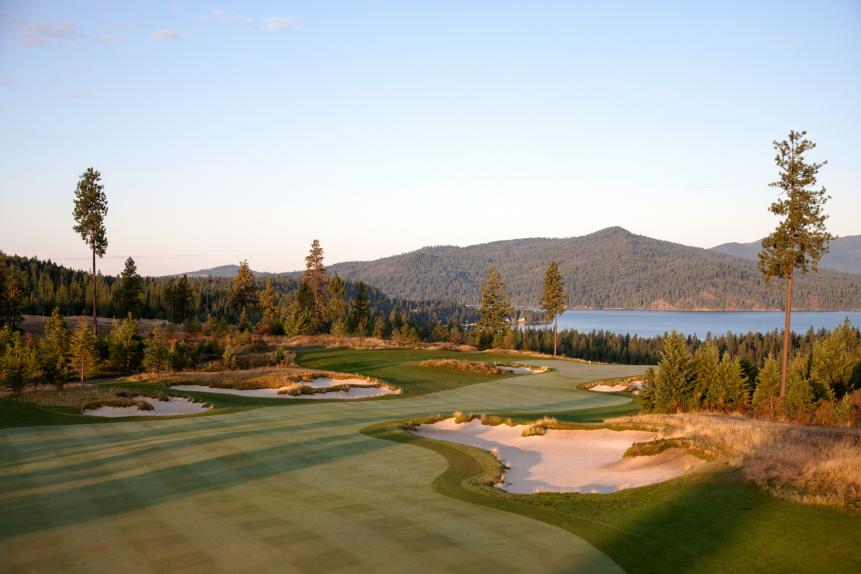 Photo by Stephen Szurlej Private 37. (31) Gozzer Ranch Golf and Lake Club Harrison, ID 4.8 17 Panelists
Photo by Stephen Szurlej Private 37. (31) Gozzer Ranch Golf and Lake Club Harrison, ID 4.8 17 Panelists
- 100 Greatest
- Best In State
When it won in 2008, Gozzer Ranch was the 13th Best New Course triumph for architect Tom Fazio. Gozzer won in part because of its gorgeous views of Lake Coeur d’Alene to the north and west, and the panoramic farm valley to the east. Little details elevate the architecture of Gozzer Ranch: a slight false-right-front edge on the first green, the backboard slope behind the sixth green, the fairway contouring on the dual-fairway drivable par-4 12th that kicks even a short drive to the base of the putting surface. Its shaggy-edged bunkers are more than mere set decorations. Some define targets off the tee; other pose options and challenges. Explore our full review 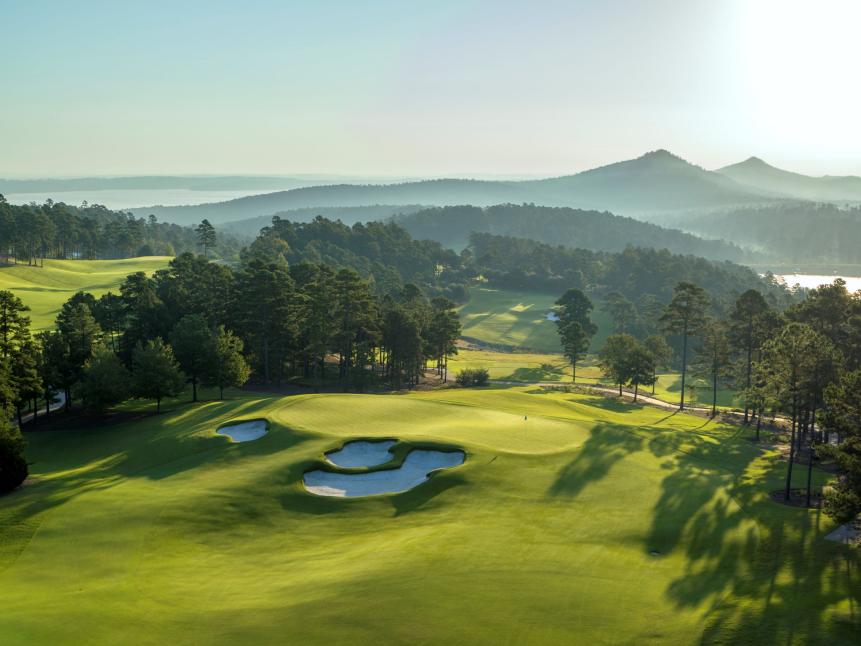 Evan Schiller/Courtesy of the club Private 38. (35) The Alotian Club Roland, AR 4.5 11 Panelists
Evan Schiller/Courtesy of the club Private 38. (35) The Alotian Club Roland, AR 4.5 11 Panelists
- 100 Greatest
- Best In State
The Alotian Club gives us a hint of what Augusta National would have looked like had Bobby Jones established his dream course on even hillier terrain than Augusta. The first tee shot drops 70 feet to a fairway below with the approach playing back uphill. The tee on the 205-yard par-3 sixth sits 85 feet above the green. The Alotian Club, founded by Warren Stephens, son of former Masters chairman Jackson Stephens, is the first (and still only) course in Arkansas ever to make our list of America’s 100 Greatest Golf Courses. The Alotian name comes from the annual golf trips Stephens once took with his buddies. He called it the America’s Lights Out Tour, and participants called themselves The Alotians. In recent years, The Alotian Club has opened its doors to collegiate players—first for the 2019 Palmer Cup and since 2020, annually for the Stephens Cup. Explore our full review 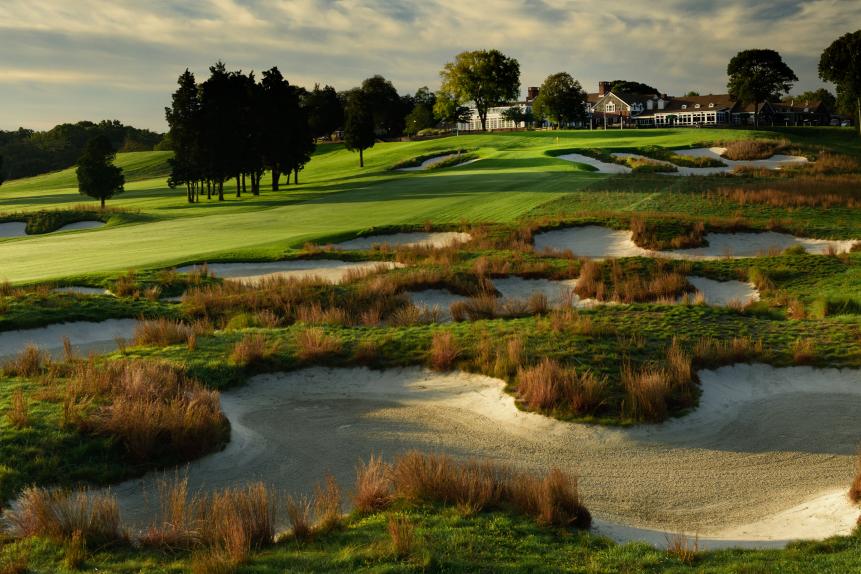 Dom Furore Public 39. (40) Bethpage State Park: Black Farmingdale, NY 4.6 40 Panelists
Dom Furore Public 39. (40) Bethpage State Park: Black Farmingdale, NY 4.6 40 Panelists
- 100 Greatest Public
- 100 Greatest
- Best In State
Sprawling Bethpage Black, designed in the mid-1930s to be “the public Pine Valley,” became the darling of the USGA in the early 2000s, when it brought the 2002 and 2009 U.S. Opens here. Then it became a darling of the PGA Tour as host of the 2011 and 2016 Barclays. Now the PGA of America has embraced The Black, which hosted the 2019 PGA Championship (winner: Brooks Koepka) and the upcoming 2025 Ryder Cup. Heady stuff for a layout that was once a scruffy state-park haunt where one needed to sleep in the parking lot in order to get a tee time. Now, you need fast fingers on the state park’s website once tee times are available—as prime reservations at The Black are known for going in seconds. Explore our full review 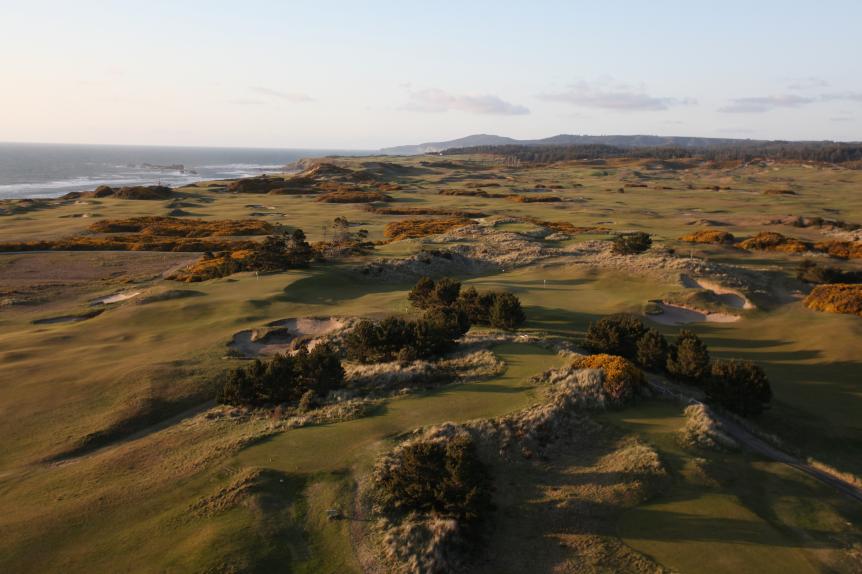 Stephen Szurlej Public 40. (37) Bandon Dunes Bandon, OR 4.6 51 Panelists
Stephen Szurlej Public 40. (37) Bandon Dunes Bandon, OR 4.6 51 Panelists
- 100 Greatest Public
- Best In State
- 100 Greatest
Chicago recycled-products mogul Mike Keiser took a gamble when he chose then-tenderfoot architect David McLay Kidd to design a destination daily fee on the remote southwestern coastline of Oregon. But the design Kidd produced, faithful to the links-golf tenets of his native Scotland, proved so popular that today Keiser has a multiple-course resort at Bandon Dunes that rivals Pinehurst and the Monterey Peninsula—or perhaps exceeds them given that all five Bandon courses are ranked on our 200 Greatest, four in the top 100. None of that would have happened if McLay Kidd hadn’t produced a great first design that drew golfers into its orbit. Explore our full review
• • •
Explore Golf Digest’s new Course Reviews section where you can submit a star rating and evaluation on all the courses you’ve played. We’ve collected tens of thousands of reviews from our course-ranking panelists to deliver a premium experience, which includes course rankings, experts’ opinions, bonus course photography, videos and much more. Check it out here!
This article was originally published on golfdigest.com

